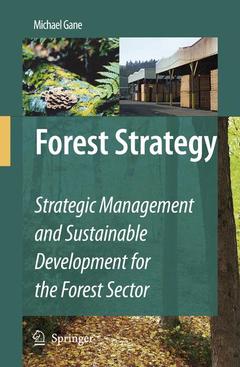Forest Strategy, Softcover reprint of hardcover 1st ed. 2007 Strategic Management and Sustainable Development for the Forest Sector
Auteur : Gane Michael

This ground-breaking book combines detailed analysis of the forest sector with modern strategic management principles to develop a vision for sustainable forest management which is both practical and theoretically robust. The book adopts a holistic approach to propose a new theoretical framework for this once traditional sector; one which reconciles current thinking in strategic management with natural resource management.
Michael Gane has previously taught at the Universities of Oxford and Bradford and was the Director of what is now English Nature between 1974 and 1980. He has since worked as a consultant on a wide range of forest economics and planning projects worldwide, particularly in collaboration with the FAO.
A potentially good book by an expert
Stature of the author
Relevance to broadscale planning issues in the forest sector
Date de parution : 10-2010
Ouvrage de 414 p.
15.5x23.5 cm
Disponible chez l'éditeur (délai d'approvisionnement : 15 jours).
Prix indicatif 210,99 €
Ajouter au panierDate de parution : 06-2007
Ouvrage de 414 p.
15.5x23.5 cm



